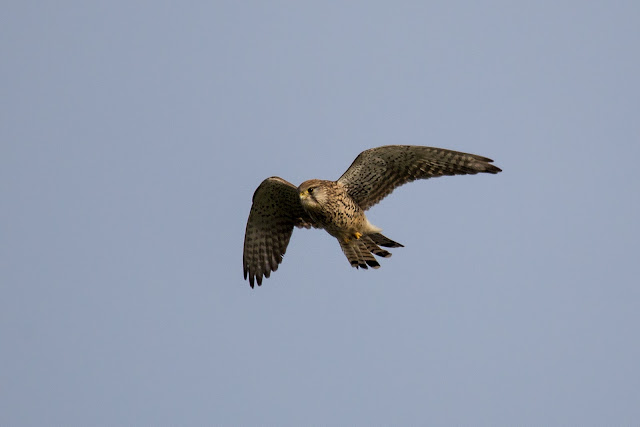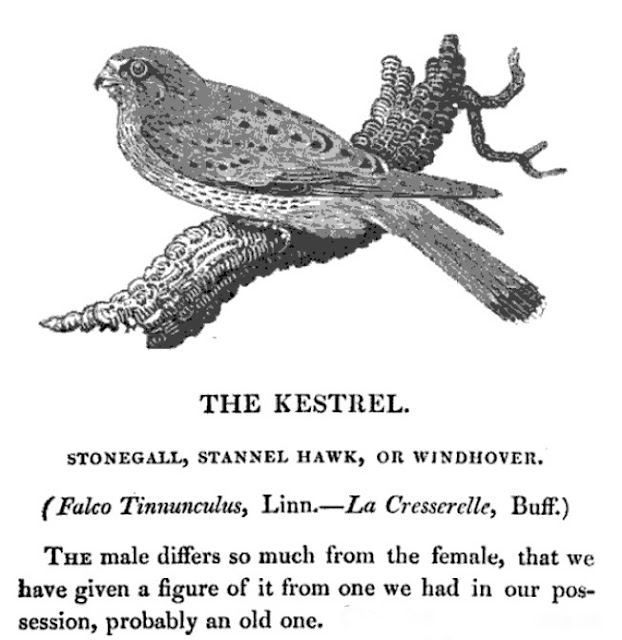I had the good fortune of seeing this kestrel earlier in the week. It was hovering over grassland at the top of a cliff and I was at the base of the cliff with the wind behind me. The bird was directly above and facing me so I was able to take a few photos.
I think this bird is a juvenile because of the heavy markings on its breast feathers but it might be an adult female.
The kestrel (Falco tinnunculus) is the most numerous bird of prey in the UK but is amber listed because of population decline. This BTO graph shows a 40% decline in the past 20 years.
I can remember 30 or so years ago when kestrels would be seen hovering every few miles along the motorways. Now they are an uncommon sight, and we are more likely to see buzzards and red kites when driving. Kestrels are fairly widely distributed but less common in Wales, Scotland, Ireland and south west England.
Thomas Bewick was so struck by the different plumage of male and female kestrels that he illustrated them both in his A History of British Birds (1797), something he rarely if ever did for other birds.
Archibald Thorburn painted male and female kestrels and a comparison with other small falcons.

















No comments:
Post a Comment